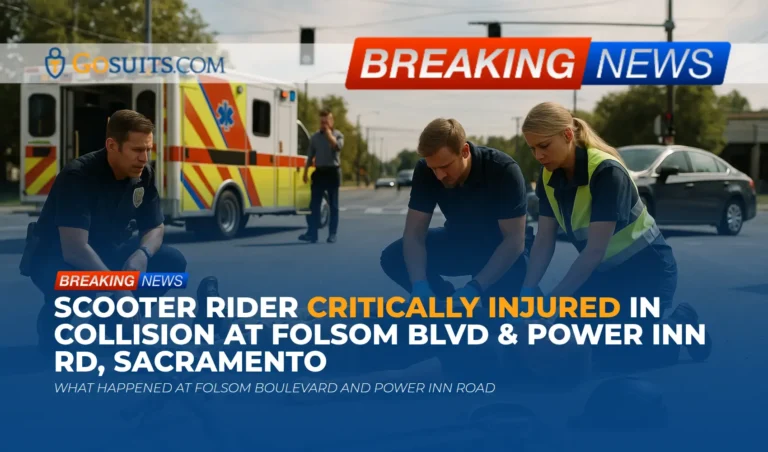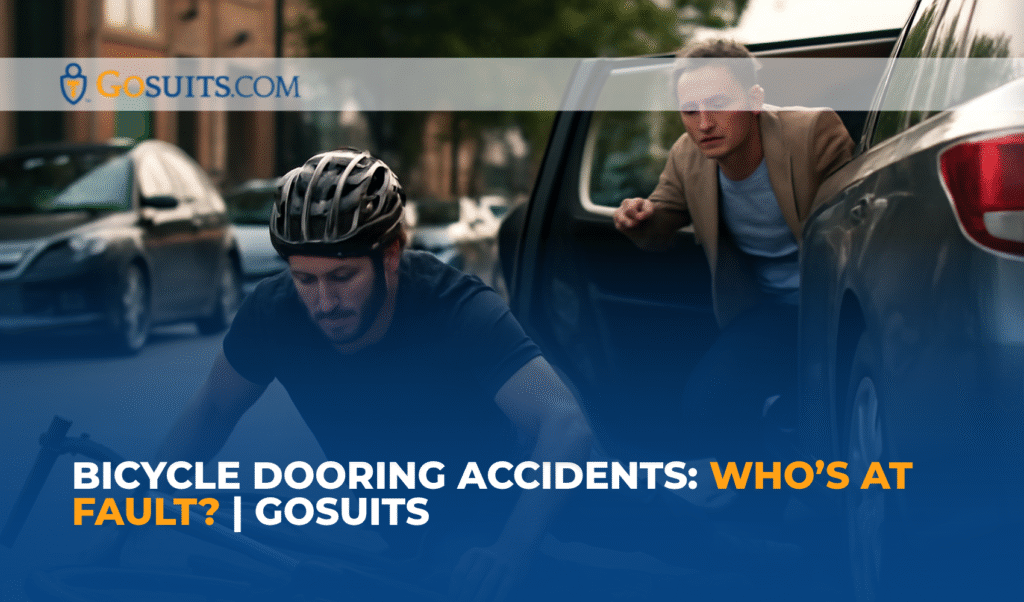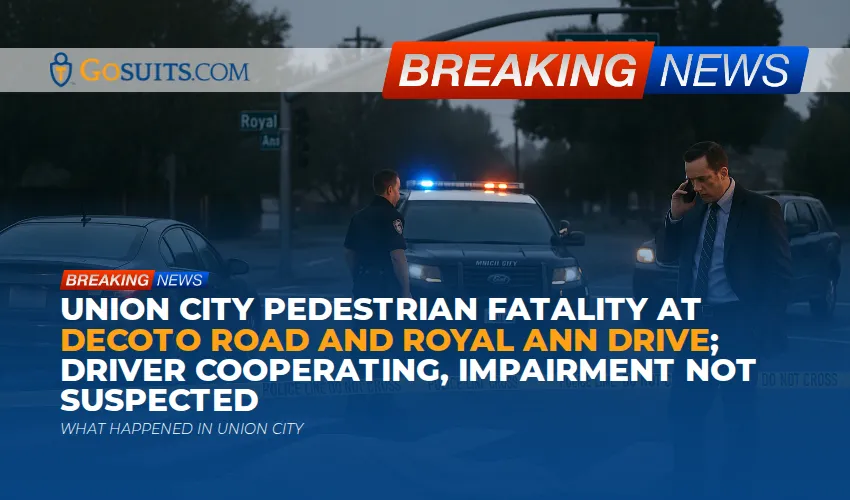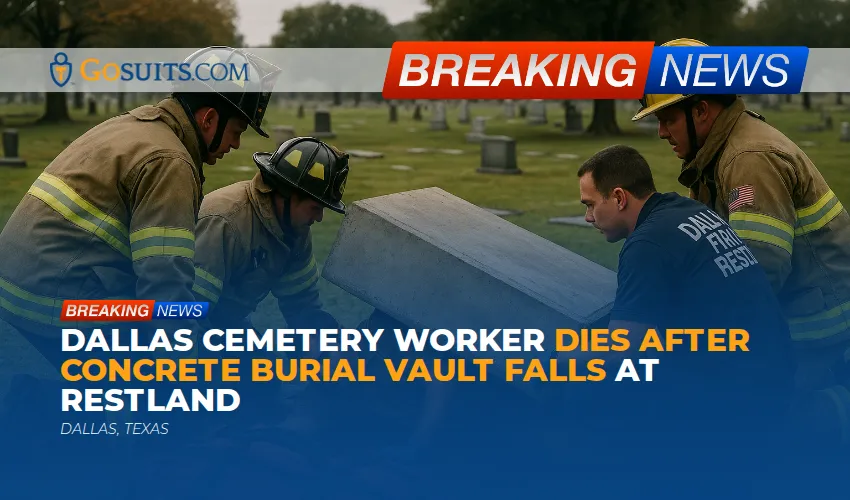- What happened at Folsom Boulevard and Power Inn Road
- Where and when it happened, and what officials have said
- For families and witnesses: immediate practical steps
- Understanding pedestrian and scooter laws in California
- Possible civil liability in a driver scooter collision
- Insurance issues after a serious roadway injury
- Records and reports, who to contact and how to request them
- Evidence to preserve from the scene and beyond
- Timelines that can affect civil claims in California
- Safety and data context for pedestrians and micromobility in California
- If a public entity may be involved, special claim rules
- Commentary from Gosuits Sacramento, California Personal Injury Attorney
- Why timely action matters now
What happened at Folsom Boulevard and Power Inn Road
Officials reported that a man riding a scooter was struck by a car in Sacramento’s College Town area near Folsom Boulevard and Power Inn Road. Emergency medical services were dispatched at approximately 1:02 p.m. The rider was transported to a nearby hospital and described as being in critical condition. According to the Sacramento Police Department, the involved vehicle remained at the scene, and the area was closed while the investigation took place. The cause of the collision has not been determined at this time.
Details are still developing. When agencies provide updates, they may elaborate on factors such as traffic signal timing, roadway configuration, visibility, speed, and right of way. Until then, it is appropriate to avoid speculation and to focus on verified information.
Where and when it happened, and what officials have said
The incident occurred at the intersection of Folsom Boulevard and Power Inn Road in Sacramento’s College Town neighborhood. Dispatch logs indicate the response began at around 1:02 p.m. The Sacramento Police Department advised the public that roads in the area were closed during the on-scene investigation. The department noted that the driver stayed on site, which is important for both safety and the investigative process.
Intersections like Folsom and Power Inn are busy arterial corridors that serve vehicles, pedestrians, cyclists, and scooter riders. In California, crash investigations often consider signal phases, lane markings, crosswalks, lighting conditions, and the movements of each party involved. Depending on findings, investigators may consult collision reconstruction, surveillance footage, vehicle data, and witness statements.
For families and witnesses: immediate practical steps
When a loved one suffers a severe roadway injury, it can be overwhelming. The following steps focus on safety, information gathering, and protecting rights while showing compassion for the person who is hurt.
- Prioritize medical care and updates. Ask the hospital’s trauma team how to receive regular updates and who can be listed for HIPAA authorizations so the family can get information. Federal guidance confirms patients generally have a right to access medical records and designate who may receive information, with some limits for privacy and safety. See the U.S. Department of Health and Human Services guidance on access to medical records at hhs.gov.
- Document what you know. Write down the date, time, location, and any details you learned from responders. If you witnessed the crash, consider preserving your observations while they are fresh.
- Identify potential witnesses. If safe and appropriate, collect names and contact information of bystanders or nearby businesses that might have cameras facing the roadway.
- Preserve personal items. Keep the rider’s clothing, helmet, and scooter in their post-incident condition if possible. Do not discard or alter them, as they may be important evidence later.
- Be careful with insurance communications. Insurance representatives may call quickly. It is wise to consult with a seasoned injury attorney before giving any recorded statement to any insurer. What someone says early on can be used against them later. An initial consultation can help clarify rights and next steps.
- Request official reports when available. Depending on the investigating agency, a collision report can often be requested by an involved party. More on obtaining records appears below.
Understanding pedestrian and scooter laws in California
California law sets duties for drivers, pedestrians, and scooter users that may be considered when determining civil responsibility. These are general provisions and may or may not apply depending on the facts of a specific case.
- Drivers and pedestrians, crosswalks. Drivers must yield the right of way to a pedestrian within a marked crosswalk or an unmarked crosswalk at an intersection. Drivers also must exercise due care to avoid colliding with pedestrians and exercise proper precautions for anyone who appears confused, incapacitated, or vulnerable. See California Vehicle Code section 21950 at the state’s official code site: leginfo.legislature.ca.gov.
- Pedestrians outside crosswalks. A person walking outside a crosswalk has duties to yield to vehicles close enough to be an immediate hazard, but this does not relieve drivers of their duty to exercise due care. See Vehicle Code section 21954: leginfo.legislature.ca.gov.
- Motorized scooters. For motorized scooters, California law covers equipment and operation, including maximum speed of 15 mph, riding as close as practicable to the right-hand curb or edge when required, and some restrictions on sidewalk riding and carrying passengers. See Vehicle Code section 21235 at leginfo.legislature.ca.gov. Whether a device is a motorized scooter, e-scooter, or nonmotorized kick scooter can affect which rules apply.
- Driver reporting duties after injury collisions. When a collision results in injury or death, drivers are required to report to the local police department or the California Highway Patrol within 24 hours. See Vehicle Code section 20008: leginfo.legislature.ca.gov.
- Comparative fault framework. California uses comparative fault to apportion responsibility in civil cases. The Judicial Council’s civil jury instruction on comparative fault explains how a jury may assign percentages of responsibility to parties involved. See CACI No. 405 on the California Courts website: courts.ca.gov (search within for Comparative Fault).
These provisions do not decide the outcome of any one case on their own. Investigators and, if necessary, civil courts compare facts with these duties to assess liability.
Possible civil liability in a driver scooter collision
Several liability questions can arise after a collision involving a scooter rider and a motor vehicle. These considerations are general and depend on facts established by evidence.
- Driver negligence. If evidence shows a driver failed to yield, was inattentive, or otherwise violated a duty that contributed to the crash, that can support a civil claim for injuries. Crosswalk compliance, speed, signal obedience, and lookout are typical focus areas. See the duty provisions noted in Vehicle Code section 21950.
- Rider conduct. If a scooter rider entered a roadway unexpectedly or violated an applicable rule, that may be considered under comparative fault. Even then, a driver’s duty to use due care remains and can still support recovery depending on the circumstances. See Vehicle Code section 21954 and CACI 405 on comparative fault.
- Third-party responsibility. If a vehicle defect, a maintenance contractor’s error, or a hazardous road condition played a role, other parties may share responsibility. In rare cases, a government entity may be implicated for dangerous condition of public property, which has special claim procedures addressed below.
- Commercial context. If the driver was operating a vehicle for work, employer liability concepts such as respondeat superior may be relevant, often addressed through the employer’s insurance policy. Facts about the driver’s status and route can be important.
Insurance issues after a serious roadway injury
Insurance coverage can be complex after a serious collision. Understanding potential coverages early can help prevent costly mistakes.
- At-fault driver liability insurance. California requires minimum liability coverage, but serious injuries often exceed minimums. Liability insurers commonly request recorded statements. It is prudent to consult an attorney before providing statements to any insurer. Statements can be used later to dispute facts or injuries.
- Uninsured or underinsured motorist coverage. If the at-fault driver has no insurance or insufficient limits, the injured person’s own auto policy may include uninsured or underinsured motorist coverage. The California Department of Insurance offers consumer information about UM and UIM coverage at insurance.ca.gov.
- Medical payments coverage. Some auto policies offer MedPay coverage that can help with medical bills regardless of fault. Policy terms vary, including whether subrogation applies.
- Health insurance and liens. Health insurers may pay initial treatment but assert reimbursement rights from a settlement under certain conditions. Navigating these issues benefits from careful coordination.
- DMV accident reporting. If a collision involves injury, death, or property damage above a threshold, an SR-1 report to the DMV is generally required within 10 days by involved parties. See the California DMV SR-1 overview at dmv.ca.gov.
Before contacting any insurance company to discuss fault or injuries, consider obtaining a free consultation with a qualified injury attorney to understand rights and pitfalls. Early statements, medical authorizations, or social media posts can affect outcomes.
Records and reports, who to contact and how to request them
Official records can help families understand what happened and support insurance claims. Availability and eligibility rules vary by agency and by who is requesting the records.
Police collision reports
When a city police department investigates a collision, involved parties or their representatives can typically request the report from the department’s records unit once it is approved. For collisions investigated by the California Highway Patrol, the CHP has a statewide process for obtaining a collision report using form CHP 190. See the CHP’s guidance at chp.ca.gov. If you are unsure which agency investigated, the dispatch time and location can help determine whether the Sacramento Police Department or CHP responded.
California’s Public Records Act provides general rules about access to government records, with certain exemptions for privacy and ongoing investigations. The Attorney General provides an overview at oag.ca.gov. Even where exemptions apply, agencies sometimes release portions of a report to involved parties.
Coroner and medical examiner matters
If a collision involves a death, the county coroner or medical examiner handles examinations and, later, releases of remains. In Sacramento County, the Coroner’s Office provides information about reports and procedures at saccounty.gov. Families can also seek certified death records through the California Department of Public Health’s Vital Records division at cdph.ca.gov.

Hospital records and updates
Hospitals follow federal privacy rules. Patients or their personal representatives can typically request copies of medical records. The U.S. Department of Health and Human Services explains access rights and timelines at hhs.gov. Ask the hospital’s records department about the request process, fees, and estimated time to fulfill requests.
Traffic signal data and roadway information
Where signal timing, signage, or construction might be relevant, public agencies maintain various records. Requests can sometimes be made under the Public Records Act. See the Attorney General’s overview at oag.ca.gov. Be specific about dates, times, and locations when requesting such records.
Evidence to preserve from the scene and beyond
Evidence can degrade quickly after a traffic collision. The following steps may help preserve critical information.
- Scene photos and video. Timely photographs of the roadway, skid marks, debris, signage, and lighting conditions can be valuable. Note the direction of travel for each party and the position of traffic signals if visible.
- Vehicle data. Many vehicles store event data related to speed, braking, and seatbelt status. Prompt preservation letters may be necessary to prevent data loss.
- Personal devices. If the scooter rider used a fitness app or a rideshare platform, timestamps and route data may exist. Preserve accounts and devices to maintain access to records.
- Nearby cameras. Businesses and residences near the intersection may have security footage that overwrites within days. Quick, polite outreach can make the difference in retaining useful video.
- Medical documentation. Keep all discharge paperwork, imaging CDs, medication lists, therapy orders, and follow-up instructions. These records demonstrate the scope of injury and treatment trajectory.
An attorney can help issue preservation requests and coordinate expert analysis. However, even without representation, families can note where cameras are located, save records, and write down what they observe.
Timelines that can affect civil claims in California
Time limits can be strict in California and missing them can limit options. The following are general statutory timeframes and may have exceptions.
- Personal injury and wrongful death. In many cases, the statute of limitations is two years from the date of injury or death. See California Code of Civil Procedure section 335.1 at leginfo.legislature.ca.gov.
- Government claims. If a public entity may be responsible, a government claim generally must be filed within six months of the incident for personal injury or wrongful death claims. See Government Code section 911.2 at leginfo.legislature.ca.gov.
- DMV report. The SR-1 accident report is generally due within 10 days if the incident meets reporting thresholds. See dmv.ca.gov.
Because exceptions and special rules can apply, especially for minors, multiple defendants, or when liability is disputed, consider obtaining a free consultation promptly to understand which deadlines apply.
Safety and data context for pedestrians and micromobility in California
Serious collisions at major intersections have grown as traffic volumes and mixed modes of travel increase. While each collision is unique, data provide context for risks and prevention.
- Pedestrian safety trends. National Highway Traffic Safety Administration analyses show that pedestrian fatalities have increased in recent years nationwide. Traffic Safety Facts publications provide detailed data on time of day, roadway type, and contributing factors. See NHTSA’s pedestrian safety overview at nhtsa.gov.
- California trends. The California Office of Traffic Safety offers statewide data dashboards and annual reports on traffic safety, including pedestrian safety focus areas. See ots.ca.gov.
- Micromobility injury estimates. The U.S. Consumer Product Safety Commission has reported increases in injuries associated with e-scooters and other micromobility devices over recent years. See CPSC research summaries at cpsc.gov.
Even where data show increased risk, responsibility in a specific collision depends on evidence about conduct, visibility, right of way, and the physical environment at the time.
If a public entity may be involved, special claim rules
Sometimes roadway design, signal timing, signage, or maintenance can be raised as contributing factors to a crash. If a government entity’s property condition is alleged to be a cause, special procedures apply.
- Government Claims Act. Before filing a civil lawsuit for money damages against a public entity in California, a written government claim must generally be filed, and for injury or death it is typically due within six months of the incident. See Government Code section 911.2 at leginfo.legislature.ca.gov.
- Public Records Act requests. To evaluate whether roadway features might be relevant, public records requests can seek maintenance logs, signal timing sheets, complaints, and recent construction records, subject to exemptions. See California Public Records Act guidance at oag.ca.gov.
Claims against public entities have shorter timelines and unique defenses. Early evaluation is important when the roadway environment is suspected to be a factor.
Commentary from Gosuits Sacramento, California Personal Injury Attorney
Our hearts go out to the injured rider and to everyone who cares about him. A sudden roadside emergency can turn an ordinary day into one filled with uncertainty. This article is shared for educational and general information purposes to help the community understand what steps may be important after a serious collision.
Based on the limited information available, investigators will likely focus on how the driver and scooter rider approached the intersection, the signal phases at the time, the presence of crosswalks, and the speed and visibility conditions. The fact that the vehicle remained at the scene and that the area was closed for investigation suggests that authorities are working to document the physical evidence and collect statements. Until the investigation is complete, it is appropriate to refrain from drawing conclusions about cause or fault.
From many serious-injury cases we have handled, we know insurance companies and large corporations often move quickly to protect their financial interests. Adjusters may request recorded statements before families have had a chance to understand the medical picture or gather key facts. They sometimes ask for broad medical authorizations that allow them to review years of records to argue that injuries were preexisting or not related. Early offers can be made before the full scope of injuries, surgeries, and rehabilitation is known. This can disadvantage people who are focused on medical care rather than claims strategy.
That is why a free consultation can be so important. A brief conversation with a skilled injury attorney can help explain rights, likely timelines, and common traps. It can also clarify why it is usually better to let someone experienced speak with insurers, request records, and secure evidence. No two collisions are the same, and early guidance can help families make informed decisions while they prioritize healing.
Why timely action matters now

What to do
- Secure medical stability and updates. Confirm who at the hospital can provide updates and how records can be requested. Keep copies of all discharge summaries, imaging results, and medication lists.
- Preserve evidence immediately. Save the scooter and rider gear as is, note nearby cameras, and ask businesses to retain footage. Take photographs of the scene and injuries when appropriate.
- Request official records. When available, request the police collision report from the investigating agency. If CHP investigated, follow the CHP 190 process described at chp.ca.gov. Track claim numbers for all insurers involved.
- Be cautious with insurers. Do not provide recorded statements or broad medical authorizations before obtaining guidance. Consider speaking with a personal injury attorney first so that communications protect rights.
- Calendar legal deadlines. Note the two-year civil statute referenced at leginfo.legislature.ca.gov and the six-month claim requirement for potential public entity claims referenced at leginfo.legislature.ca.gov.
Why acting now helps
- Evidence fades. Security footage may overwrite in days, skid marks fade, and physical evidence can be lost if not preserved.
- Medical trajectory matters. Early records and imaging create a baseline that can be compared to later findings, which helps show causation and the progression of injuries.
- Deadlines are strict. Missing a claim deadline, especially for government entities, can limit options. Early assessment ensures the right procedures are followed.
- Insurer strategy starts early. Insurers often take positions quickly. Prompt guidance reduces the risk of missteps that can affect outcomes.
Taking organized steps soon after a serious collision can protect both health and rights. Even simple actions like saving clothing, noting camera locations, and keeping a treatment journal can make a meaningful difference later.






